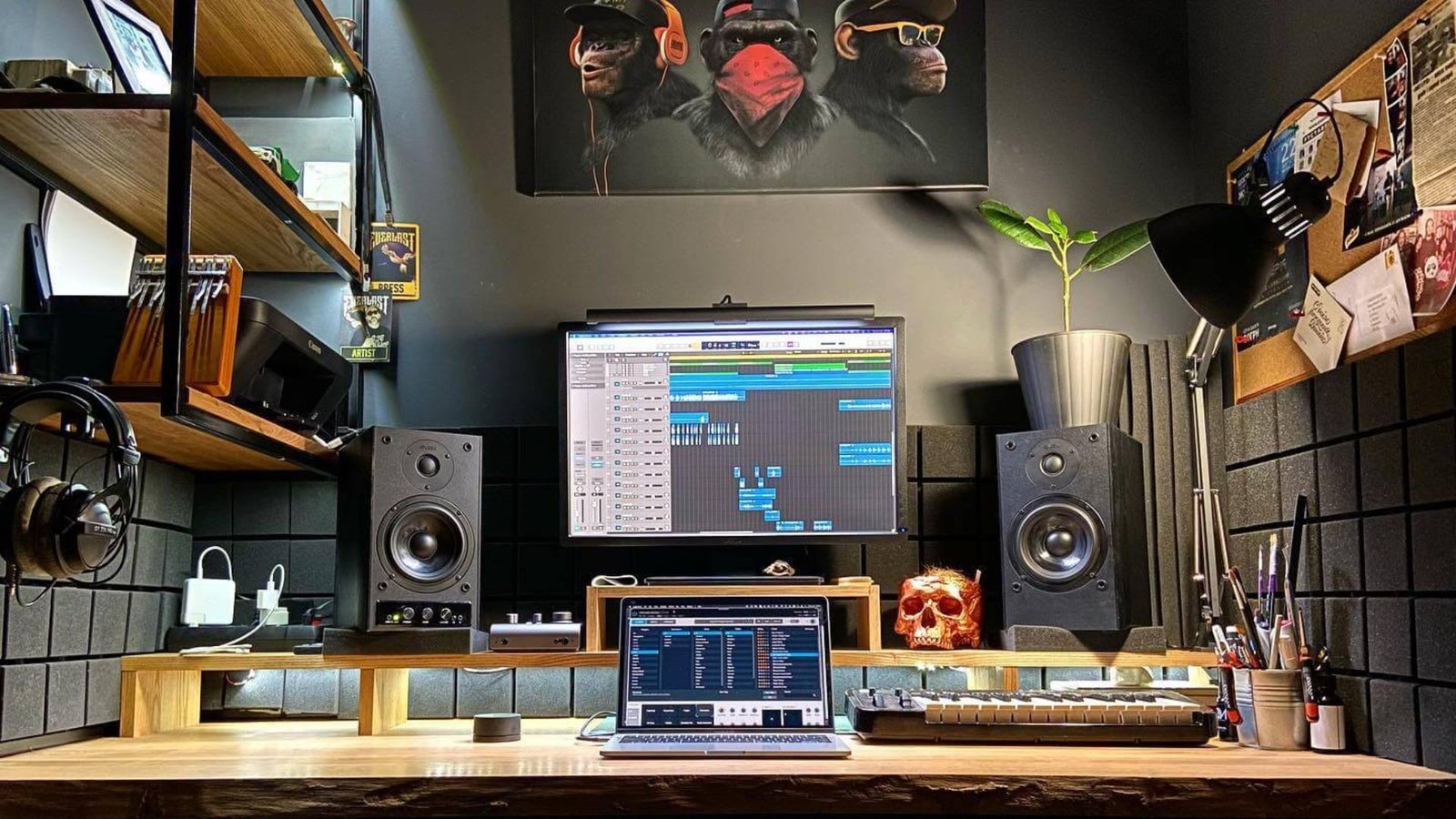Creating a home recording studio doesn’t have to break the bank. With the right approach and smart choices, you can set up a functional and effective space for recording high-quality music without spending a fortune. Here’s a comprehensive guide on building a home recording studio on a budget.

Determine Your Studio Needs
Assess Your Goals
Start by defining what you need from your home studio. Are you recording vocals, instruments, or both? Do you need advanced mixing capabilities, or are you focusing on basic recordings? Understanding your goals helps you prioritize your budget.
Make a List of Essential Gear
Identify the essential equipment you’ll need. Basic items include a computer, audio interface, microphones, headphones, and studio monitors. Decide which items are crucial for your setup and which can be added later.
Choose Affordable Equipment
Opt for Budget-Friendly Audio Interfaces
Audio interfaces are essential for connecting your instruments and microphones to your computer. Look for reputable brands that offer affordable models with good quality. Focus on interfaces with at least two inputs and outputs for versatility.
Invest in a Quality Microphone
While high-end microphones can be expensive, you can find budget-friendly options that offer excellent sound quality. Consider a condenser microphone for vocals and a dynamic microphone for instruments. Look for microphones with good reviews within your budget.
Select Inexpensive Studio Monitors
Studio monitors are crucial for accurate sound representation. Budget monitors may not offer the highest-end sound quality, but they can still provide a decent and clear representation of your recordings. Check for user reviews to find the best options in your price range.
Create a Budget-Friendly Acoustic Treatment
DIY Acoustic Panels
Proper acoustic treatment can improve your recordings significantly. DIY options, such as homemade acoustic panels using foam or rock wool, can be cost-effective. You can find tutorials online for building and installing these panels.
Use Soundproofing Materials
To minimize external noise, consider using budget-friendly soundproofing materials like heavy curtains or blankets. These materials can help reduce sound reflections and improve recording quality.
Set Up Your Recording Space
Choose a Suitable Room
Select a room in your home that offers minimal external noise and decent acoustics. Avoid rooms with too much echo or background noise. A small, quiet room with minimal reflective surfaces is ideal.
Organize Your Gear
Set up your gear in a way that maximizes functionality and minimizes clutter. Position your desk, monitors, and audio interface in a way that allows easy access and workflow. Keep cables organized to avoid tangling and distractions.
Utilize Free or Affordable Software
Explore Free DAWs
Digital Audio Workstations (DAWs) are essential for recording and editing music. Many free DAWs, like Audacity or Cakewalk, offer robust features suitable for home recording. As you grow, you can consider investing in more advanced DAWs.
Find Budget-Friendly Plugins
While premium plugins can be expensive, many free or affordable plugins offer great functionality. Look for reputable websites and forums for recommendations on budget-friendly audio plugins.
Learn and Improve Your Skills
Take Advantage of Free Resources
Numerous online resources, such as tutorials and forums, can help you learn how to use your equipment and software effectively. Invest time in learning recording techniques and improving your skills.
Join Online Communities
Participate in online communities and forums related to home recording. Engaging with other enthusiasts and professionals can provide valuable insights, tips, and support.
Maintain Your Studio
Regularly Clean and Maintain Gear
Keep your equipment in good condition by cleaning and maintaining it regularly. Proper care can extend the lifespan of your gear and ensure optimal performance.
Update as Needed
As your budget allows, consider upgrading or adding new equipment to enhance your studio. Gradually improving your setup ensures you continue to achieve better sound quality and meet your evolving needs.
Conclusion
Building a home recording studio on a budget is entirely achievable with careful planning and smart purchasing decisions. By focusing on essential equipment, creating effective acoustic treatments, and utilizing free resources, you can set up a functional and high-quality recording space without overspending. Embrace the process of learning and growing, and your budget-friendly studio can become a powerful tool for your music production.




